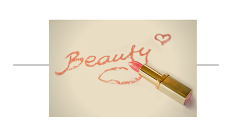Lipstick is a makeup that applies shading, texture, and protection to the lips. Numerous tones and kinds of lipstick exist. A few lipsticks are like lip balm to add both shading and hydration. Thus, it helps to exaggerate your beauty. Although the name initially applied to the baton (stick) of material inside a cylindrical holder normally, around 10mm in measurement and 50mm long, the term presently relates to the material itself.
Early history:
The story starts 5,000 years ago, on the dressing table of a Sumerian queen in the city of Ur in current Iraq. The vast majority of Queen Puabi's narratives have been lost in the wrinkles of time, yet her inheritance has been joined to the first recorded utilization of lip rouge ever. A profoundly regarded figure in one of the earliest known civilizations in Mesopotamia, she wore elaborate headpieces and jewelry, but the main part of her look was her brilliantly colored lips, which she painted utilizing a powder creation produced using red rocks and white lead and contained in cockle shells. The pattern spread among her people and neighboring civilizations, similar to the Minoans, who utilized a purplish-red color produced from a gland in the murex shellfish.
In the ancient Indus Valley Civilization, ladies may have utilized rectangular bits of ochre with inclined finishes as lipstick. Ancient Egyptians wore lipstick to show societal position rather than gender. They separated the red color from fucus-algin, 0.01% iodine, and some bromine mannite. However, this color brought about serious illness. Lipsticks with sparkling impacts were at first made utilizing a pearlescent substance found in fish scales.
The Chinese made a portion of the primary lipsticks that were produced using beeswax more than 1,000 years ago to ensure the lips' sensitive
skin. Then, during the Tang Dynasty (618-907 CE), scented oils were added to them, which gave the mouth a captivating variable.
In Australia, young ladies would paint their mouths red with ochre for adolescence rituals.
United Kingdom:
Lip coloring began to acquire some popularity in sixteenth-century England. During the time of Queen Elizabeth1, dazzling red lips and an obvious white face got trendy. Around then, lipstick was produced using a mix of beeswax and red stains from plants. Just high society ladies and male actors wore cosmetics.
For most of the 19 century, the utilization of makeup was not viewed as acceptable in Britain for respectable ladies, and it was related to minimized groups like actors and whores. It was considered shameless and unrefined to wear makeup. In the 1850s, reports were being distributed wearing ladies of the risks of utilizing lead and vermilion in makeup applied to the face. Before the end of the 19th century, Guerlain, a French restorative organization, started to make lipstick. The first commercial lipstick had been created in 1884 by perfumers in Paris, France. It was shrouded in silk paper and produced using deer fat, castor oil, and beeswax. Before this, lipstick had been made at home. Complete acknowledgment of the undisguised utilization of makeup in England seems to have shown up for the in-vogue Londoner in any event by 1921.
United States:
In the 19th century, lipstick was colored with carmine color. Carmine color was extricated from cochineal, scale insects local to Mexico and Central America live on cactus plants. Cochineal insects produce carminic acid to prevent predation by other insects. Carminic acid, which structures 17% to 24% of the weight of the dried bugs, can be removed from the insects' bodies and eggs. Blended in with aluminum or calcium salts, it makes a carmine color.
This lipstick didn't arrive in a cylinder; it was applied with a brush. Carmine's color was costly, and the vibe of carmine color lipstick was viewed as unnatural and dramatic. So lipstick was dislike for regular wear. Just actors and actresses could pull off wearing lipstick. In 1880, some stage actresses wore lipstick in public. The famous actresses, Sarah Bernhardt, started wearing lipstick and rouge openly. Before the late nineteenth century, ladies just applied cosmetics at home. Bernhardt regularly applied carmine color to her lips in public.
In the mid-1890s, carmine was blended in with an oil and wax base. The combination gave a natural look that was more adequate among ladies. Around then, lipstick was not sold in spoiled metal cylinders; it was sold in paper tubes, colored papers, or in little pots. In addition, the Sears Roebuck inventory previously offered rouge for lips and cheeks by the last part of the 1890s.
So why do most women wear red lipstick?
Red lipstick is immersed with sexual meanings. Barely amazing, given that its essential capacity is to make lips resemble a female's privates.
Crude, yet obvious.
As indicated by Diane Ackerman, author of A Natural History of the Senses, anthropologists accept that red lips fill in as a token of the labia, which "flush red and swell when they're excited."
Ackerman likewise brings up how, in later years, lips are quite often enhanced in shades of pink or red and afterward finished off with a completing layer of gleam "to make them look glossy and clammy." No compelling reason to explain what Ackerman's getting at there.
In which case, when you apply either red lipstick or lip gleam what you're very attempting to do is imitate your actual condition of sexual excitement.
So essentially, the purpose behind wearing red lipstick or lipgloss is to expand sex appeal. Difficult to reject that one. Investigate the accompanying pictures, and you'll see that a solid component of every lady's sexual appeal is, undoubtedly, a consequence of the splendid lipstick she's wearing.
Significance of lipstick in sexuality:
A "lipstick lesbian" is a female who is pulled into different females, yet remains characteristically feminine and has a "girly" personality, once in a while known as a "femme." The expression "lipstick lesbian" got mainstream when utilized by author Deborah Bergman, a correspondent for the Los Angeles Times


